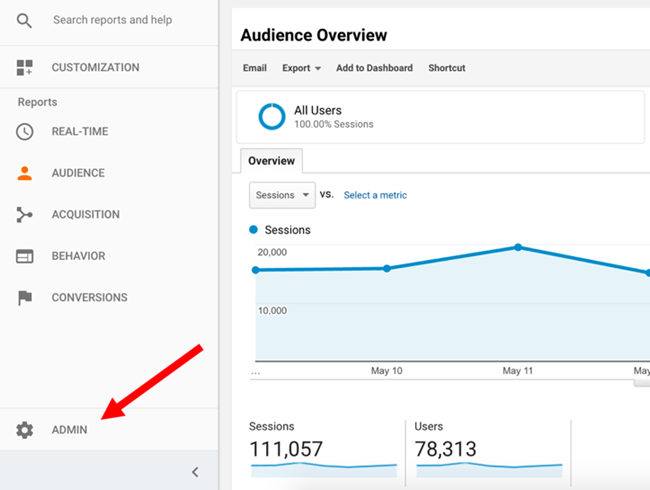How to Leverage Remarketing In Google Analytics for Your Service
How to Leverage Remarketing In Google Analytics for Your Service
Blog Article
Using Remarketing in Google Analytics: A Comprehensive Guide
Using remarketing in Google Analytics supplies companies a calculated edge in reaching out to potential consumers. This overview will certainly shed light on the necessary steps involved in taking advantage of the complete potential of remarketing in Google Analytics, leading to improved marketing results.
Understanding Remarketing in Google Analytics
Remarketing in Google Analytics enables services to purposefully target individuals who have actually previously connected with their web site or mobile app. By leveraging information from Google Analytics, services can develop tailored remarketing lists based on individual habits, such as pages seen, activities taken, or details objectives accomplished. This powerful device makes it possible for companies to re-engage with individuals who have actually revealed interest in their services or products, ultimately increasing the possibility of conversion.
Recognizing the various sorts of remarketing approaches is essential for an effective project - What Is “Remarketing” In Google Analytics?. Google Analytics supplies numerous choices, including standard remarketing, dynamic remarketing, and remarketing lists for search advertisements (RLSA) Each kind serves a special objective and can be customized to satisfy specific advertising objectives
Additionally, examining the efficiency of remarketing projects is important for optimizing outcomes. Google Analytics provides valuable insights into the effectiveness of different remarketing strategies, permitting organizations to make data-driven choices and fine-tune their targeting method. By constantly readjusting and checking remarketing initiatives based upon analytics data, services can make the most of ROI and drive success in their advertising initiatives.
Establishing Up Remarketing Projects

After establishing target market checklists, the next action is to link Google Analytics with Google Advertisements. By linking these 2 systems, companies can flawlessly transfer audience listings from Google Analytics to Google Advertisements for remarketing objectives. This integration permits even more precise targeting and better project performance.
As soon as the accounts are linked, services can produce remarketing campaigns in Google Ads using the audience lists formerly specified in Google Analytics. These campaigns can be customized with specific ad creatives, messaging, and bidding process methods to properly re-engage with previous visitors and drive conversions. By following these actions, businesses can utilize the power of remarketing to enhance their advertising initiatives and increase ROI.
Utilizing Audience Division Approaches

Predefined sections in Google Analytics permit you to quickly evaluate usual target market groups fresh individuals, returning users, or customers that completed a particular goal on your internet site. Custom sections, on the various other hand, enable you to produce distinct segments based upon particular criteria that are essential to your company goals. Dynamic remarketing listings automatically readjust based upon individual behavior, showing individualized ads to customers who have interacted with your website in particular ways.
Studying Remarketing Efficiency Metrics
Upon assessing the efficiency of remarketing campaigns in Google Analytics, the evaluation of vital efficiency metrics offers useful insights right into audience engagement and conversion prices. By diving into metrics such as click-through prices (CTR), conversion rates, price per procurement (CPA), and return on ad invest (ROAS), marketing experts can gauge the success of their remarketing initiatives. Examining these metrics allows marketers to enhance projects, improve audience targeting, and allocate spending plans successfully to enhance total remarketing performance.
Optimizing Remarketing Methods
When refining remarketing methods in Google Analytics, concentrating on target market segmentation is vital for accomplishing project success. By dividing your audience right into particular sectors based upon their actions, demographics, or rate of interests, you can tailor your advertisements better to each team. This targeted technique raises the possibility of involving users who have currently shown passion in your service or products, causing greater conversion prices.
An additional vital element of optimizing remarketing methods is continuously screening and refining your projects (What Is “Remarketing” In Google Analytics?). A/B testing different ad creatives, messaging, or deals can aid you recognize what resonates ideal with your audience and drives the most conversions. By examining the performance of these examinations in Google Analytics, you can make data-driven decisions to optimize your remarketing initiatives better
In addition, leveraging vibrant remarketing can significantly improve your campaign results. This function allows you to show customized advertisements to customers based on their previous communications with your internet site, showcasing services or products they have previously checked out. By providing customized material to customers based on their interests and Homepage actions, dynamic remarketing can assist raise interaction and drive conversions.
Final Thought
To conclude, using remarketing in Google Analytics is a strategic method to target users that have formerly involved with an internet site. By developing personalized their explanation target market checklists and using audience segmentation strategies, organizations can maximize remarketing advocate raised conversion rates. Evaluating performance metrics and continually enhancing techniques are important for making best use of the performance of remarketing initiatives.
Google Analytics offers various choices, including typical remarketing, dynamic remarketing, and remarketing checklists for search ads (RLSA)After establishing up audience lists, the next step is to link Google Analytics with Google Advertisements. By connecting these 2 platforms, companies can effortlessly move target market lists from Google Analytics to Google Ads for remarketing functions.When the accounts are linked, services can create remarketing projects in Google Ads making use of the audience provides formerly specified in Google Analytics.When refining remarketing strategies in Google Analytics, concentrating on audience division is extremely important for attaining campaign success.
Report this page